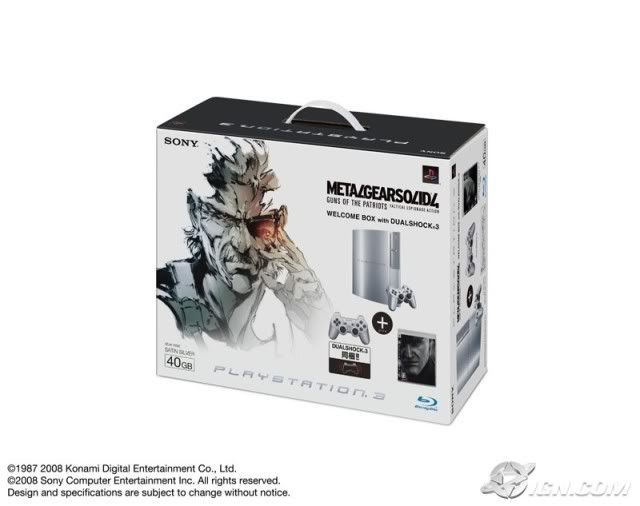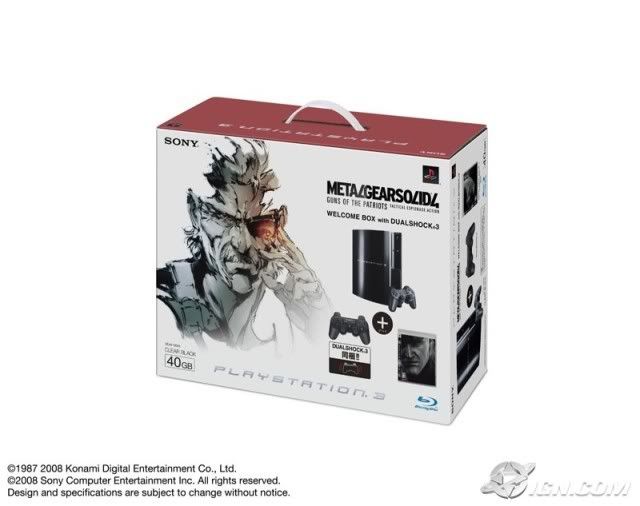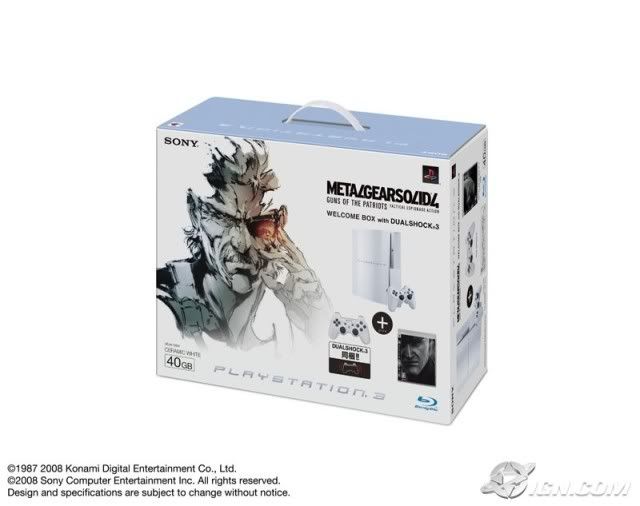Metal Gear Solid 4: Guns of the Patriots Progress Report
IGN infiltrates Konami's secret bunker to find out what the future holds for Solid Snake.
You might remember that, back in February, IGN's Jeff Haynes was one of a handful of journalists to infiltrate Konami's Japanese HQ, bringing back a first-hand account of what will surely be one of the most important games on the PlayStation 3 when it is released next month. Now IGN has followed up with another black ops mission into the heart of Paris where, along with around 70 other journalists from across Europe, we got to play on an even more polished – and even more complete – version of Metal Gear Solid 4: Guns of the Patriots, discovering more information about the game with which to whet your appetite.
Appropriately enough, the journey to our Parisian destination felt very much like a military operation: waking at the crack of dawn to depart, and, like Snake, carrying only the most essential items about our person (thanks to the already notoriously evil baggage handling system at Terminal 5). Upon our arrival, we were conducted to the hotel equivalent of an underground bunker: a swanky, cavernous basement in which were arrayed about a hundred PS3s, all connected to a high definition telly and surround sound headphones.
Those headphones gave a crisp, convincing edge to the action, which played out – as you'll know by now if you've seen any of the teaser trailers or read any of IGN's previous coverage – across a dusty, pockmarked, battlefield of the near future. "War has changed," declares Snake, and so has Metal Gear Solid: the feel of the game is initially very different to other Metal Gears. In the absence of the PS2's distinctive textures and the game's trademark fixed cameras, the action is transplanted from empty bases and tranquil jungles to bullet-scarred battle-zones that are brimming with activity, and lengthy Codec conversations conspicuous by their absence. Consequently, playing through the early parts of Guns of the Patriots actually feels like you could be playing any other third-person action game.
Then, however, as the stealth begins to play out and the cut-scenes kick in, and you begin to notice the sort of attention to detail that Hideo Kojima has made his hallmark, it all starts flooding back. Hiding in lockers, or dropping girlie mags, or posing as a statue to avoid detection. The sort of seemingly small but actually far-reaching touches that make the world feel so real – the sort of touches that have been a feature of the Metal Gear series since before Snake started shooting up drinks cabinets back in MGS 2. And it's all supported, here, by the amazing surround sound – the constant hum of helicopters, or the chatter of birds, for example – and the cutting-edge visuals. Look closely, for example, and you'll see Meryl Silverburgh (yes, the Meryl Silverburgh) sporting a bullet-shaped earring.
You'll have already read about a lot of the game's new features: the OctoCamo suit that allows you to blend into the background; the Solid Eye that highlights items and targets, and grants you with infra-red vision whenever you need it; the new Metal Gear Mk. II, who serves as your battlefield assistant; the stealth ring system, which highlights any enemies if you only stop and crouch; and the enormous arsenal of customisable weapons that you can purchase from a mysterious arms dealer called Dreben. One or two features that haven't received much coverage include the Gekkos – the enormous cyborg bipedal monstrosities that star in the game's initial trailer, who move with a sinister athleticism that belies their ungainly hybrid appearance – and the SIXAXIS functionality while you're hiding in bins. But broadly, as the game plays out, you'll find yourself in familiar territory, with the camouflage system and stress gauge in particular, a fine-tuned evolution of features found in previous Metal Gear games (the latter works well to conspire against players who decide on a gung-ho approach, by the way).
The biggest difference, however, is the battlefield context. This is an environment that's alive. It's buzzing with action, and you'll find yourself constantly surrounded by bursts of gunfire, or obscured by clouds of dust thrown up by rockets or grenades. Imagine Call of Duty 4, or Ghost Recon, but instead of going in guns blazing, spearheading the combat and taking charge of battle, your job is to avoid the hotspots, stay clear of confrontation, and sneak around behind the scenes – perhaps casually helping out now and then in order to play off one side in the conflict against the other. All the while avoiding detection.
It's radically different to sneaking down empty corridors as you might have done in either of the first two Metal Gear Solid games, and different again to crawling around in the undergrowth that featured in the third. As well as taking cover behind walls, or crawling on your belly through air vents, you'll be ducking behind explosions, and using crossfire as a distraction. You'll be dodging across battle-scarred towns and ducking into dank and gloomy cellars. And partway through the game's first act, in a dramatic change of pace you'll find yourself involved in a sustained gun battle with highly agile, elite opponents.
Maybe that's why the arsenal of weaponry seems so much larger than any other Metal Gear game. Indeed, the Dreben Point system, which allows you to salvage items left on the battlefield to exchange for new weaponry, produces a pronounced shift in tone from the last few Metal Gear games. You can choose to ignore the system completely, of course, but it'll prove difficult because you'll find that the quest for new and enhanced military hardware provides an extra incentive to go after those difficult to reach pick-ups as you rack up ammo and items to help you on your mission.
Aside from the action, the cut-scenes are as lengthy, and crazy, and impressive as ever. From an encounter with a bald monkey in silver pants, to a squad of soldiers acting in destructive harmony that would put most Hollywood action sequences to shame, Kojima-san's cinematic tendencies are as pronounced as ever. There are flashbacks, there is intrigue, there are familiar faces and new people and places. At the risk of spoiling it for you: Liquid Snake is back and he's planning an insurrection.
That risk of spoiling things is a very real one. In fact, Konami's high-profile security has only allowed us to barely scratch the surface of what we saw in Paris. Rest assured that there is more – much, much more – to come. "What I concentrated on the most while creating Metal Gear Solid 4 is that it's the grand finale of the series, and I really took care to end the story in a good way," said Hideo Kojima on the last day of our Parisian operation. And indeed he has. The story is, on one level, simple enough. As Kojima puts it: "The story is quite simple: you have Liquid and Snake goes after him all across the world." But over the course of the game you'll find that it ties up every last loose end, and brings the entire series together to a brilliantly satisfying conclusion.
And that's why Konami is insisting on a tight-lipped approach in advance of the game's launch. After playing the game from start to finish, it's easy to see why. Guns of the Patriots is simply a game that you have to experience for yourself. It's a journey that's more important than its destination, even if that destination happens to be the definitive, ultimate, Metal Gear game. So if you really want to know what it feels like to play Metal Gear Solid 4, make sure to order a copy. And make sure, too, to give yourself a week free from any distractions, so you can sit down and play all of the other Metal Gear games in sequence, because that is the perfect preparation for playing what is, without any doubt, Hideo Kojima's finest hour.
http://uk.ps3.ign.com/articles/871/871184p2.html
Just over a month left now guys!














